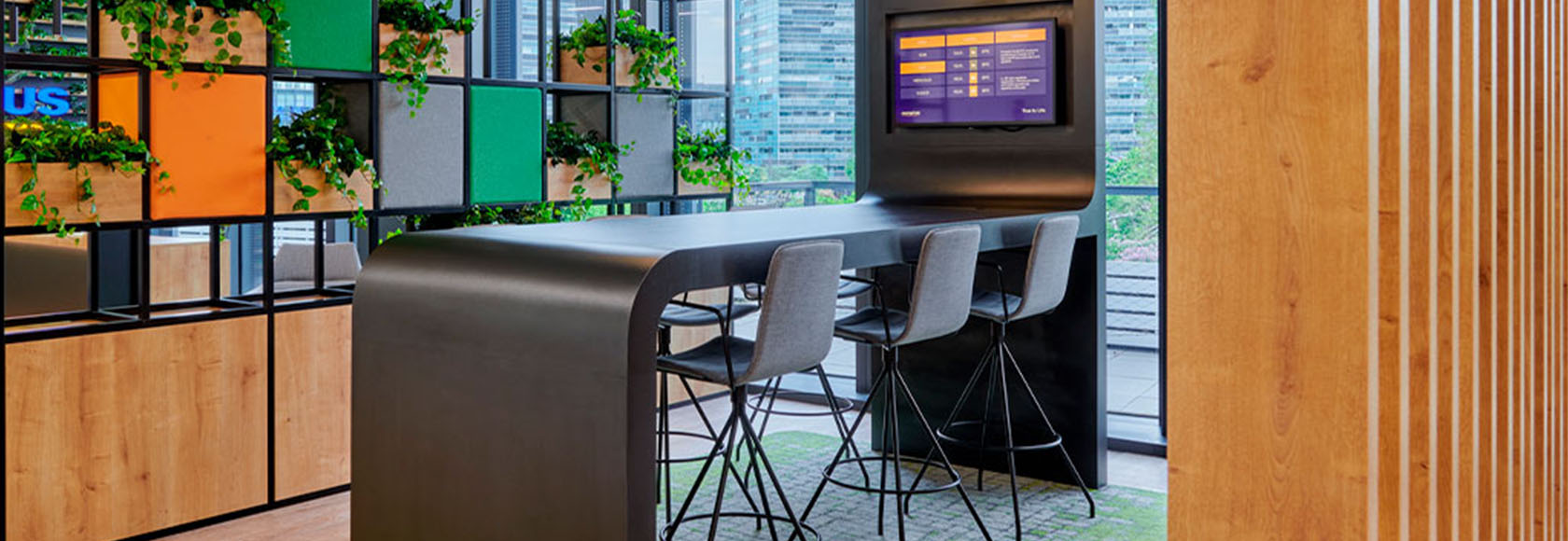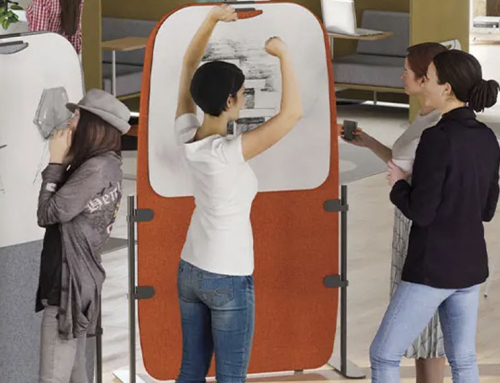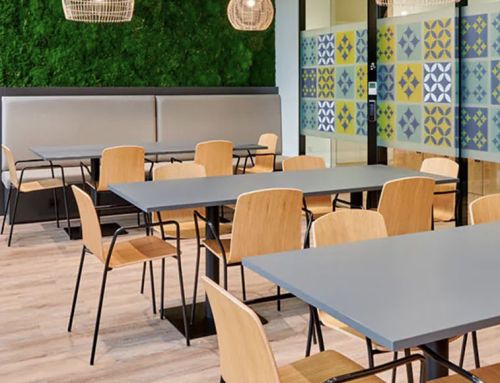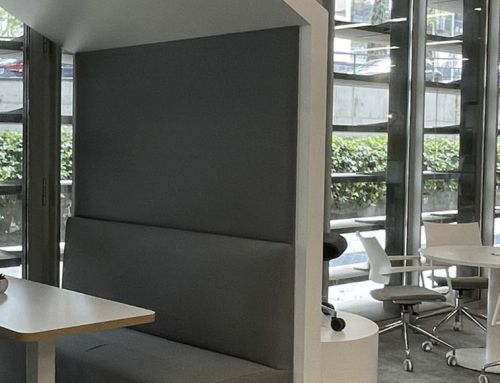Trends in HR, will we see news for 2024? Organizations are constantly evolving and changing, and one of the aspects that has evolved the most in recent years is human resources management. The way of working and business cultures have undergone major transformations, leading to the emergence of new trends in HR and people management. In this sense, the design of workspaces has also acquired great importance, as it is directly related to HR trends and employee well-being.
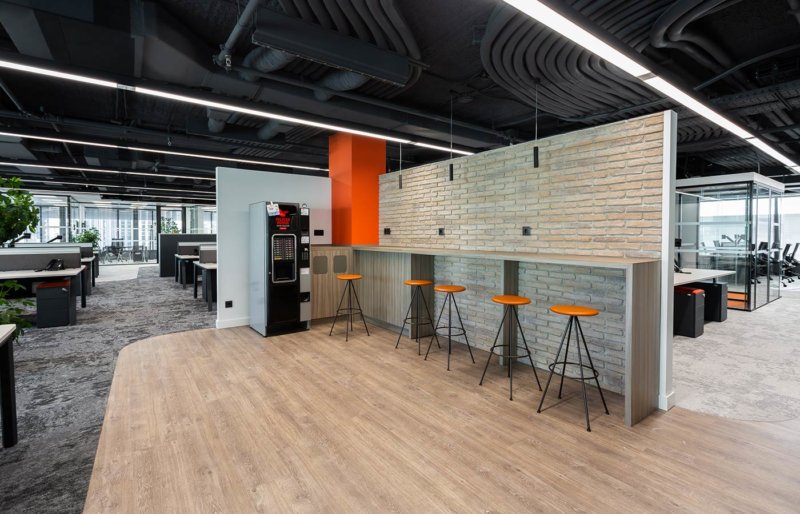
New business cultures and different ways of working
Business cultures and ways of working have evolved significantly in recent decades. In the past, the corporate culture was more hierarchical and authoritarian, where the boss had the last word and employees were expected to follow orders without question. Today, however, companies have adopted a more collaborative and participative culture, where teamwork is encouraged and the ideas of all employees are listened to. This new way of working has led to greater innovation and creativity in the workplace. In addition, companies are increasingly interested in the well-being of their employees, so they are implementing flexible work and hybrid work policies to enable a work-life balance. In addition to other health and wellness policies in its three dimensions: physical, emotional and social.
This evolution has also led to a change in the organizational structure, with fewer hierarchical levels and more autonomy for employees in decision-making. Technology has also had a major impact on the way we work, enabling remote collaboration and access to information in real time.
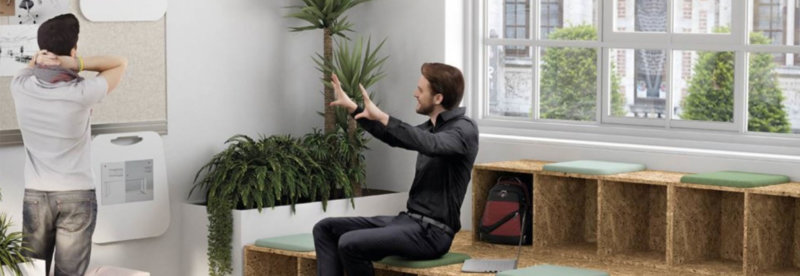
New trends in HR
New trends in HR have been identified that are transforming the way companies relate to their employees. One of these trends is the adoption of a more individual-centered approach, recognizing that each employee has different needs and motivations. This involves customizing HR policies and practices to suit the preferences and skills of each employee. Another important trend is the promotion of collaboration and teamwork. Organizations are promoting the creation of spaces and tools that facilitate communication and collaboration among team members, either through physical spaces designed to encourage interaction or through the use of collaborative technologies. In addition, companies are placing greater importance on the professional development and growth of their employees. Training and development programs are being implemented that enable employees to acquire new skills and knowledge, which not only benefits individuals, but also the organization as a whole. Finally, we are seeing, as we have already mentioned, an increased focus on the emotional and physical well-being of employees. Companies are implementing policies and programs that promote a healthy work-life balance and the creation of work environments that promote health and wellness. One challenge all HR teams face is that there are too many things that could be addressed, but not enough time or resources.
HR trends for the future
HR trends tell us that technology and AI will play a major role in HR trends, as we expect greater adoption of digital tools for talent management, performance appraisal and continuous learning. Artificial intelligence can also be used to improve efficiency in selection and recruitment processes. Artificial intelligence can also be used to improve efficiency in selection and recruitment processes. Finally, there is expected to be a greater emphasis on diversity and inclusion in the workplace, which means not only hiring people from different backgrounds but also creating a welcoming environment for all employees, regardless of gender, race, age, culture or sexual orientation.
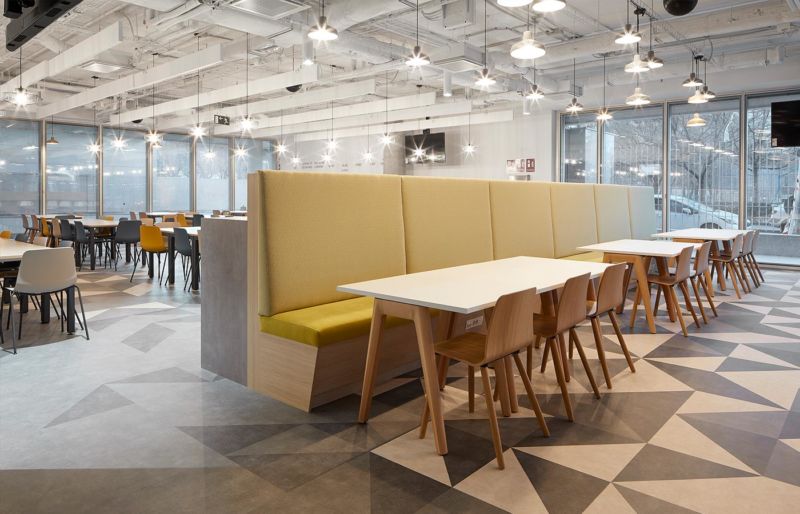
The design of workspaces and their relationship to HR trends
Workspace design is one of the key areas in the implementation of current trends in Human Resources.
The evolution of business cultures and ways of working has made the design of workspaces a fundamental tool for the successful management of people. In this sense, HR departments are increasingly involved in the planning and design of workspaces, with the aim of creating environments that foster creativity, well-being and collaboration among employees. In addition, workspaces must be flexible and adapt to new trends in HR, such as remote work and work-life balance. Therefore, the design of the spaces must consider the possibility of having common areas, areas for informal meetings, open and closed spaces, among other aspects. Also, the design must be consistent with the company culture and corporate branding. It is important that employees feel identified with the company and feel comfortable in their workplace.
The importance of physical space for employee wellbeing
A pleasant environment can reduce stress levels and improve mood, which can lead to increased motivation and commitment. Employees spend much of their day in the workplace, so it is crucial that the physical space be tailored to their individual needs. A well-organized and well-equipped space can also foster collaboration and teamwork, which can lead to better communication and problem solving. The inclusion of common areas such as informal meeting rooms, break areas or green spaces can also improve the quality of life in the workplace.
Physical space in the workplace has a significant impact on employee well-being. Well-designed and equipped spaces can increase productivity, creativity and job satisfaction. Thus, companies are paying more and more attention to ergonomic office chairs, elevating tables or soft seating furniture, for example. A pleasant environment can reduce stress levels and improve mood, which can lead to increased motivation and commitment. Employees spend a large part of their day in the workplace, so it is crucial that the physical space is tailored to their individual needs.
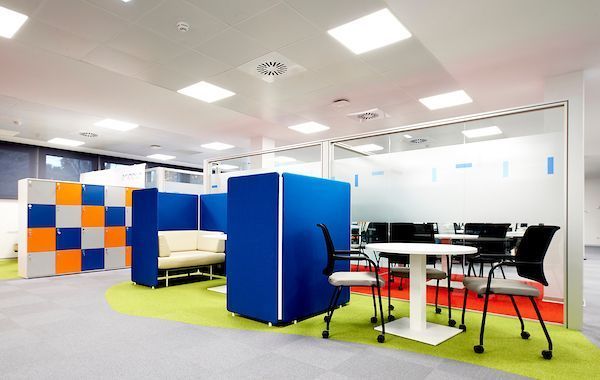
Flexible workspaces: the new normal
Today, flexible workspaces have become a key trend in the field of human resources. With the increasing adoption of remote work and the need to adapt to changing work environments, companies are looking for ways to provide their employees with a flexible and adaptable environment. Flexible workspaces allow employees to choose where and how they work, giving them greater autonomy and freedom to organize their time and workspace.
The new normal means that organizations must rethink their traditional approach to workspaces. It is no longer just a matter of having a physical office where employees feel obliged to attend every day. Now, companies are opting for flexible workspaces that foster collaboration, creativity and employee well-being. These spaces may include common areas, informal meeting rooms, breakout areas and outdoor spaces. The important thing is that workers want to come to the office because there they find the place they need or most like at any given moment and/or activity.
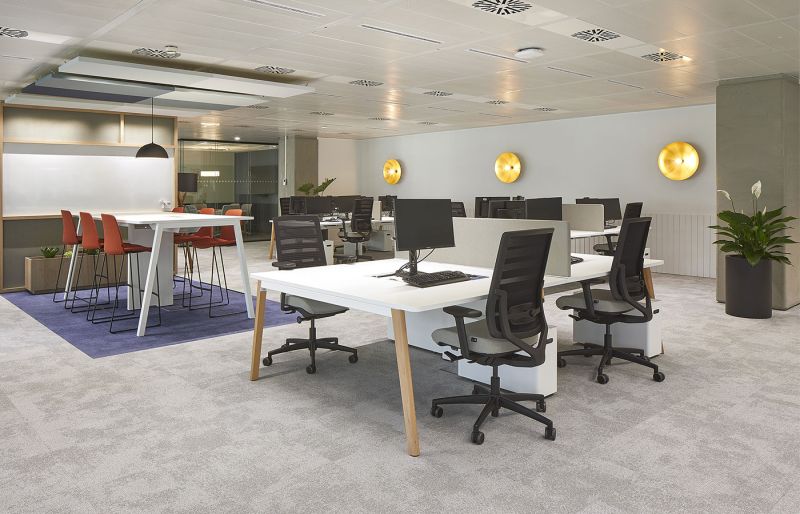
How to adapt workspaces to HR trends
Therefore, adapting workspaces to new HR trends is a key challenge for companies seeking to attract and retain talent. One of the most prominent trends in people management is the focus on employee well-being and satisfaction. This involves designing spaces that encourage comfort, collaboration and creativity.
To adapt workspaces to these new trends, it is important to consider different aspects. First of all, the flexibility and versatility of the space must be taken into account, as we have indicated. Employees increasingly value the ability to work remotely or on flexible schedules, so spaces must allow for this freedom and adaptability. In addition, it is essential to provide rest and recreation areas where employees can relax, socialize and unwind during their workday. In addition, advanced technology should be incorporated to facilitate communication and collaboration between teams. Finally, it is important to consider the aesthetics and design of the space, creating pleasant and stimulating environments that promote productivity and emotional well-being. And, especially, where to live the brand. Because the office is today the only space where employees can socialize while breathing values and a brand that makes them part of a common project.
Adapting workspaces to new HR trends not only improves employee satisfaction, but also contributes to the success and competitiveness of companies in an increasingly dynamic and demanding work environment.
